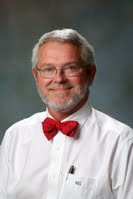Training, Education, Breathing
When I was a young teacher, already in the classroom but also enrolled in some grad courses at the College of Charleston, I began to wrestle with the distinction between “education” and “training”. At first these two words seemed interchangeable, but as I struggled to understand them on a deeper level, it became apparent that they are fundamentally different concepts.
I still think about this distinction. It was with delight that I read an excellent article on this very subject from a professor of physics at Ohio State the other day. He maintains that training gives us the “know how” while education gives us the “know why”. The student who only wants to know the equation and when to use it is trained. The student who has questioned why such an equation produces certain results is educated. He goes on to argue that education allows a person in the workforce to be flexible. When job requirements change, the educated person can extrapolate her knowledge and adapt appropriately. The trained person? Well, retraining is in his future.
Please understand that I do not find these terms to be in some imaginary linear hierarchy where training is subordinate to education. On the contrary, I perceive them to be mutually beneficial elements of useful intelligence. If we must think of a hierarchy, then we must acknowledge that there are times when training trumps education . . . and vice versa! One of my favorite examples of training versus education involves an appliance that resides in over 95% of American homes: the microwave oven.
In the early history of this modern marvel, all microwave oven cookbooks began with a chapter on the nature of electromagnetic energy, how cellular components of food were excited at the molecular level by bombardment of microwave radiation (between radio and infrared in wavelength) and a mass of other technical details. Clearly it was believed that education was called for! Today I can find no cooks who care about these matters in any significant way. We know that the microwave oven does better with some foods than others. We have been trained. I find it ironic that there are recipes advocating using the microwave as a slow-cooker, while on the same shelf in my kitchen I have cookbooks explaining how to speed up my crock pot. Once again, we are faced with the wonderful thought: Because something can be done, it does not necessarily follow that it should be done.
Teachers at every grade level are aware that sometimes we are engaged in training; sometimes in education. Habits of good scholarship are not confined only to the earliest grade levels. Drawing out the “know why” should not be sequestered until college. Pope John Paul II once described an ideal of melding eastern religious thought with western practices. He used the phrase “breathing with both lungs.” It’s a good image for every classroom teacher to keep in mind when considering a lesson plan.
“Henry G. Selby, headmaster of All Saints’ Episcopal School in Morristown, is a popular speaker at seminars, conferences, civic events, and professional development meetings. He would be delighted to speak at your next meeting. Please call the school for more information.”












